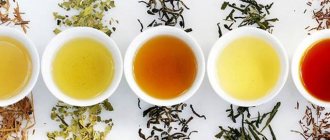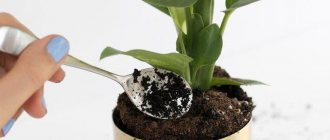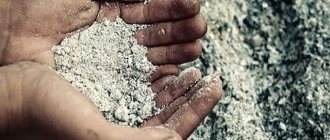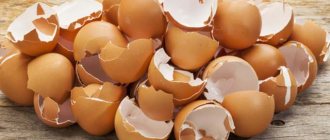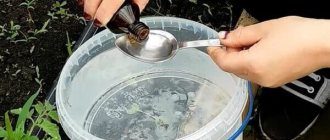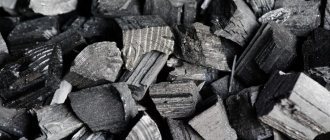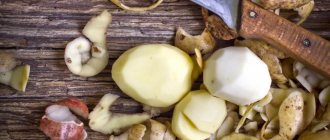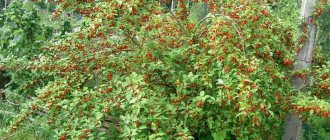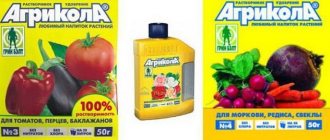Composition of the compound and its effect on plants
Supporters of organic farming are alarmed by the presence of traditional chemical compounds NPK in fertilizing. They are included in most mineral fertilizers. You should not refuse the product because of its chemical components, since they are organically combined with hummic acids, which predominate in the compound.
If we carefully consider the category to which the substance belongs, then classifying it as a fertilizer would be incorrect. It would be more correct to describe it as a biostimulant supplemented with nutritional components. In other words, the product has a double effect on plants:
- Activates vital processes;
- Provides them with the necessary nutrition.
Like any complex substance, it has a number of advantages, but, unfortunately, there is also a negative side.
"Gumi" and "Fitosporin" - are they really safe?
The change from city life to rural life also leads to a change in the birthday gifts one receives. Now they look something like in the photo. I am an ardent opponent of all chemical fertilizers, I use only humus, manure, rotted compost, and to protect against pests - various pepper and celandine infusions. Friends presented the natural elixir of fertility “Gumi” and protection against diseases and growth acceleration “Fitosporin-M”. They claim that it is completely environmentally friendly. And yet I still have doubts. Please tell me whether these drugs can cause any harm or benefit?
Article on the topic: ABA for annual garden and balcony flowers - reviews, description
You write that you are afraid of the “chemistry” of mineral water, and you believe that everything organic is better. Believe in celandine, although it is very poisonous. There is no need to believe so much in the spells and myths of “natural farming” that are becoming more and more complex and interesting. In small doses, high-quality mineral fertilizers do not harm plants, you or soil microorganisms, especially if applied locally. The more humus you manage to accumulate in the soil, the less harm there will be from overdoses of mineral water. Learn to accumulate humus.
I use humates, but not for the purposes that are written in their advertising. But I simply understand that constant fertilizing of the soil with small doses of humates acts as a catalyst for soil formation. The organic matter introduced is not destroyed, but turns into stable humus. And humates help soil organisms build “homes and cities” for themselves. Therefore, do not be afraid of the gum drug, use it at least according to the instructions, there will be no harm. But remember, this is a catalyst. It does not provide food to plants.
It’s even more interesting with phytosporin. It's just a microbe. Hay stick. It is needed so that when applied in the fall over the stubble, the straw will rot faster. When applied to the foliage in summer, it slightly stimulates plant immunity and, as an active competitor, prevents the rapid proliferation of pathogenic fungi. But its effect is very weak. And phytosporin cannot replace modern fungicides. I have stopped using it in recent years, since AKCH is much more interesting and convenient for me. It gives all the same effects as phytosporin. Plus a dozen more, which is described in more detail in my article. The answer to your question is clear. The drugs you named will never harm anyone. As a doctor, I used to give phytosporin to children as medicine. In pharmacies its name is bactisubtil. It works weakly. Not interesting.
Thank you!, But I was worried that you would be offended by the phrase - “You shouldn’t believe so much in the spells and myths of “natural farming” that are becoming more and more complex and interesting.” - so ask questions, we will find answers.
Advantages and Disadvantages
There is a common misconception that nitrates are found only in mineral fertilizers. Not at all, they are also found in organic fertilizers. Without them, the synthesis of amino acids, which serve as the basis for proteins, is impossible.
Gumi is produced in the form of powder or liquid.
If you use chemical compounds in accordance with regulatory recommendations, it is easy to avoid the accumulation of harmful substances in fruits.
Moreover, the universal fertilizer “Gumi” successfully neutralizes the negative effects of nitrates with the help of humic acids.
Thus, the disadvantage is reduced to zero.
But the drug has a number of undeniable advantages:
- Stimulates cellular growth of all organs. In particular, after planting it activates the growth of hairy roots, which directly affect the survival rate of plants. The number of young shoots determines the ability of seedlings and saplings to absorb nutrients from the soil. With the use of "Gumi" the root system is 2 - 3 times larger compared to untreated plants.
- Acting as an irritant, humic acids stimulate the formation of protective substances in the plant body. As a result, immunity against diseases and pests increases. Strong, healthy plants can independently resist negative interference. They produce biological compounds that repel insects and prevent the development of fungal pathogens.
- Seedlings treated with “Gumi” are highly resilient. This quality is invaluable when growing seedlings and transplanting them into open ground. The stress caused by a change in the greenhouse environment to extreme conditions is tolerated much more easily than in plants grown in the traditional way.
- This drug acts at the cellular level without interfering with genetic processes. This means that there is no need to worry about GMO mutations (genetically modified organisms).
Summing up, we can safely say that with the reasonable use of “Gumi”, the benefits brought by the product are invaluable.
Consumer reviews about Gumi
Those who use these preparations to grow plants speak very positively about them. Here is a description by gardeners of Gumi fertilizer, its use and reviews about it:
In my garden I often use Olympic Gumi-K - this is an environmentally friendly fertilizer in the form of a gel, it protects plants well from stress, and after its use the harvest is quick and abundant.
It contains everything that vegetables need: various minerals and biologically active substances. Fertilizer is definitely something everyone should use.
I really like the fertilizer Hydrohumin - it is an environmentally friendly growth stimulator for plants. Its composition and properties are much better than other similar fertilizers. And I was convinced of this myself. I recommend this drug to everyone. Hydrohumin, in my opinion, is much better than other humates.
I purchase Gumimax fertilizers regularly. Among its varieties there is fertilizer for indoor plants, but now I couldn’t find it in the store and bought a universal one. This additive perfectly protects plants from various infections, so I advise everyone to buy it for prevention.
I regularly use a universal product with a very strong insecticidal effect, Gumi + BTB + LPC; it is highly safe and well protects plants and their fruits from spider mites, Colorado potato beetles and many other insect pests. In addition, it repels insects with its smell. In my opinion, it is an ideal drug, I recommend it to everyone.
Methods of application
Using a multifaceted effect on plants, the product is used:
- Just like traditional fertilizers that are applied to the soil before planting;
- For routine care, foliar feeding is carried out, that is, the above-ground part of the plants - stems and leaves - is sprayed;
- As a stimulator of seed germination before sowing. Also used for disinfection against infectious pathogens. With the participation of “Gumi”, even weak and substandard seeds germinate and take root 100%. Seedlings grown from them are of good quality and highly resistant to adverse external influences;
- When transplanting seedlings into open ground, anti-stress treatment is carried out so that the “young growth” can more easily adapt to changes;
- Spraying during the budding period leads to improved flowering and fruiting. In plants treated with the drug, the processes of synthesis of starch, sucrose, glucose, proteins are activated - substances that underlie fruits and determine their visual and taste qualities.
Manufacturers have taken care to provide gardeners with preparations for various purposes and compositions.
Rules for using fertilizer
Initially, the drug Gumi was produced in tablet form. 2-3 tablets were dissolved in 1 liter of water and this volume was enough for about 50 feedings. Now these drugs are sold in liquid form, packaged in convenient containers. Instructions for use are included with each package of Gumi Kuznetsova fertilizer.
To increase soil fertility, fertilizer is applied in early spring or after harvesting. During this period, the soil absorbs fertilizer better because the soil is still resting. Beneficial substances are not washed away.
Fertilizing can be used at different stages of growing garden crops. It has a wide range of applications.
To obtain a solution of the drug for drip irrigation, use 1.5 ml of fertilizer per 1 liter of water. 0.5 ml more will be required to prepare a solution for watering using a watering can or foliar feeding.
For pre-planting treatment, the following is done:
- To treat cuttings of garden plants, seeds, and fertilizing for indoor flowers, a solution is made at the rate of 100 ml of water per 2 ml of humic fertilizer.
- For pre-planting treatment of potatoes, garlic, and onions, a saturated solution is prepared: 60 ml of fertilizer is used per 1 liter of water. The first application of fertilizing to seedlings of garden crops is carried out after rooting is completed, several weeks later.
The seeds are treated with a solution before sowing. You can either soak them in advance for a day, or water the seeds sown in the ground or on seedlings before planting them.
Onions, potatoes and garlic are soaked for up to 3 hours before planting. It is recommended to soak cuttings of garden plants before planting.
Seedlings should be fed when transplanted into open ground. This will help the plants adapt easily. In addition, soft fertilizer Gumi Omi is used as foliar feeding, for spraying on the leaves.
Varieties of “Gumi”, their purpose and methods of application
The products are developed taking into account the characteristics of individual crops during different periods of the growing season. Among the wide assortment, the following drugs are most often distinguished:
| Name | Purpose |
| Gumi-20 Universal | For root stimulation and nutrition after planting and during the fruiting period on any type of soil, for all plants without exception. It is also used for soaking potato tubers, dahlias, onions, garlic and ornamental bulbous plants before planting. |
| Gumi-20M “Rich. Vegetables, Berries, Greens" | Includes NPK, in a ratio of 2:2:3, plus trace elements, in chelated form. Also contains biologically active humic acids and phytosporin → use of drugs. The complex is designed for caring for all vegetable and leaf crops in open and closed ground. |
Specialist consultationThe chelated form of chemical compounds are organometallic salts that dissolve well in water and are easily absorbed by plants. When they get into the soil, they do not allow mineral substances to become unavailable for nutrition. With foliar feeding of leaves, they are absorbed in full, without loss. Z. K. Klimenko – Doctor of Biological Sciences, Head. Department of Ornamental Crops of the Nikitsky Botanical Garden, National Academy of Sciences of Ukraine. | |
| Gumi-30 Universal | Available in paste form. It is used as a solution for foliar feeding. Improves fruit size and quality. Increases yields by 30 – 50%. |
| Gumi-Omi “Onion-Garlic” | An example of a narrow focus of a drug that was created for the preliminary preparation of bulbous crops before planting, as well as disinfection against infection. It is used not only for onions and garlic, but also when planting all bulbous decorative flowers: · Tulips, · Narcissov, · Krokusov, · Muscari, · Hyacinths, · Lily et al. |
| Gumi-Omi "Compostin" | As the name implies, the product is intended for the rapid formation of compost (see → what to make compost from). The increased nitrogen content in the NPK 13:1:0.4 complex helps accelerate biochemical processes, which are also improved with the participation of enzymes. They make up 50% of the total volume, another 20% are humic acids - organic compounds that convert plant residues into humus (see → the use of humus). |
When using the listed drugs, the following consumption rates are recommended:
- “Gumi-20 Universal” – 0.5 liters of working solution per 150 m2. To prepare the nutrient liquid, you will need 10 ml of concentrate per 10 liters of water.
Tip #1 . The required amount of the drug can be measured with a 10 ml or 20 ml medical syringe.
- “Gumi-20M Rich. Vegetables, Berries, Greens" is used for root application of established crops; the solution is prepared at the rate of 1 teaspoon per 1.5 liters of water. This amount is enough for four young plants or two mature bushes. Foliar feeding is carried out with a solution in a ratio of 1:40. “Gumi-Omi “Onion-Garlic”.
- “Gumi-Omi “Onion-Garlic” is available in powder form. For pre-planting preparation of soil for digging, take 700 g per 10 m2. The preparation is evenly scattered over the entire area and loosened from the soil to a depth of 15–20 cm.
For current feeding you will need 70 g per 10 m2. It is better to apply the powder locally around each bush. From spring to autumn you can do 4 - 5 sessions with an interval of 20 - 25 days.
- “Gumi-Omi “Compostin” is sold in 0.5 liter bottles. From this volume you can prepare a working solution of 100 liters of water. This amount is enough for 500 kg of compost.
Gumi-20 “Kornesil” Kuznetsova deserves special attention, which contains only natural ingredients.
Contraindications for the use of humic fertilizers
Humic fertilizers are contraindicated primarily for coniferous plants. The fact is that evergreens extract nitrogen from the air with the help of needles and do not need large quantities of it. And humic fertilizers, like any organic matter, contain nitrogen, which conifers do not need. Excess nitrogen also leads to increased, one might say, abnormal growth of shoots, which is why they cannot become lignified before the arrival of cold weather. This will lead to freezing of the tops and death of the plant.
Do not get carried away with active root feeding with humates. The gradual accumulation of some elements in the soil will lead to an overdose and have the opposite effect - the plants will not develop and will become sick.
Humic fertilizer will not bring results for the growth and productivity of legumes, as well as corn and sunflowers. The maximum that can be done for these plants is to carry out pre-sowing seed treatment and treat weak plants.
Find out on FORUMHOUSE: what the lunar calendar is and how to use it; how to choose a phytolamp for plants; and also watch the video on how to grow fruit plants from seeds.
Effectively increasing soil fertility with the help of “Gumi”
Supporters of organic farming have ambivalent attitudes towards mixed mineral-organic preparations. But all gardeners, without exception, unanimously recognize Kuznetsov’s Gumi 20 “Kornesil” as one of the best environmentally friendly means for soil improvement.
“Gumi 20 “Kornesil” Kuznetsova”
A balanced composition of organic matter optimizes soil structure and enriches it with nutrients. Enzymes contained in humic acids stimulate plants to complete metabolic processes.
As a result, the product has the following effect:
- Serves as an organic fertilizer for soil fertility in the pre-sowing period, providing the soil with a full range of nutrients;
- Used for soaking seeds and tubers before sowing and planting;
- Thanks to the drug, plants quickly establish themselves due to the regrowth of young roots. In this case, “Gumi” acts as a rooter;
- During routine care, foliar feeding during the budding period improves flowering. The result of which is abundant and high-quality fruiting;
- Acts as a preventive and protective agent against diseases and pests. As a result of foliar spraying, the immunity of plants is increased, thanks to which they produce fungicidal and insecticidal substances that prevent infections from developing and repel insects.
Standards of use ⇓
| Digging up empty beds early in spring or autumn after harvest | For 1 m2 – 10 liters of water with two teaspoons of product |
| Soaking and disinfecting seeds before sowing | 1 drop per 100 ml of water |
| Daily curing of cuttings or roots of seedlings before planting | 2 teaspoons per 5 liters of water |
| Soaking potato tubers, onions and garlic | 30 ml per 1 liter of water |
| Watering and foliar spraying of vegetable and garden crops at intervals of 12–15 days. | 2 teaspoons per 10 liters of water |
Considering the multifaceted effect of “Gumi 20 “Kornesil” Kuznetsov”, it can be called the most universal drug in this category.
Composition of Gumi preparations
The soil becomes depleted over time and needs to be enriched with nutrients. Various drugs are used to fill the deficiency. Among the most popular is Gumi. These are organic mineral fertilizers or fertilizers. They consist of micro- and macroelements and various salts of humic acids.
The compositions of individual types of the drug Gumi differ. First of all, it depends on which plants need fertilizer, because different plants require certain elements. For example, there is Gumi fertilizer, which is used specifically for feeding strawberries.
However, the basic composition of the fertilizer in this series is constant and contains:
- about 60% humic acid salts;
- from 2% nitrogen. It is required for the full development of the plant;
- about 2% phosphorus, which is quickly absorbed by flora;
- 1% potassium;
- The composition also contains sodium, which, when combined with potassium in the soil, improves the vitality of the flora. When air temperature or humidity changes, plants do not respond to this by decreasing growth.
The fertilizer also contains other beneficial substances. Together, they contribute to the development of plants from the beginning of the growing season until harvest.
Today, humic fertilizers are widely used. To create them, mostly exclusively natural components are used: organic matter of brown and hard coal, peat, bird droppings, horse manure, sapropel. They are washed out of the soil for a long time, have protective properties against diseases and enhance plant growth even in unfavorable conditions.
The drug Gumi Omi and its types is a unique biostimulator of growth, which is due to the content of an active complex of minerals. They are completely safe for humans.
Gumi fertilizer product line - names
BashIncom has a very large range of products. In addition to Gumi and its updated variants (marked with the letters M and K), fertilizers supplemented with branded humates are also produced: the Gumi-Omi, Borogum, Bionex, Bogaty series. Each product is supplied with detailed instructions. As for Gumi itself, it is produced in three concentrations (20, 30 and 90) and in different forms: in the form of powder, liquid concentrate, paste and gel. They have very simple and clear instructions. The result is a ready-made working solution for plants of universal use.
What is the use of Gumi?
Also check out these articles
- Bell flowers: planting and care in open ground
- Fungicide Hom
- Fungicide Tilt
- Yucca flower
In order to use fertilizer with maximum benefit, you need to know all its properties. What are the benefits of Gumi fertilizer?
- Stimulates the growth of cultivated plants. After using the drug, the plant begins to grow vigorously, but does not stretch. It grows foliage, the stems become thicker, and the root system branches out.
- Strengthens crops, increases their resistance to diseases, sudden changes in weather - stimulates the functioning of the immune system.
- If you use fertilizer for seedlings, it will be easier for them to transfer the transplant to open ground or a greenhouse. After use, the sprouts become strong and can even withstand minor mechanical damage.
- Protects beds from pests. After application, the fertilizer begins to release substances that repel certain diseases.
Important!
Gumi fertilizer cannot fully replace a specialized fungicide. Therefore, if there is a serious problem with diseases, it is necessary to treat the plants with fungicides.
- When using Gumi in crops, the concentration of starch, vitamins, minerals and sugars increases, which leads to a rich taste and nutritional value of the product.
- Soil fertility increases with regular use of Gumi.
- This substance can be used with insecticides and pesticides, which is convenient for gardeners and gardeners.

